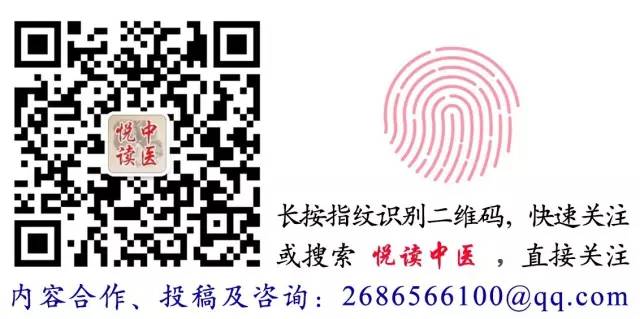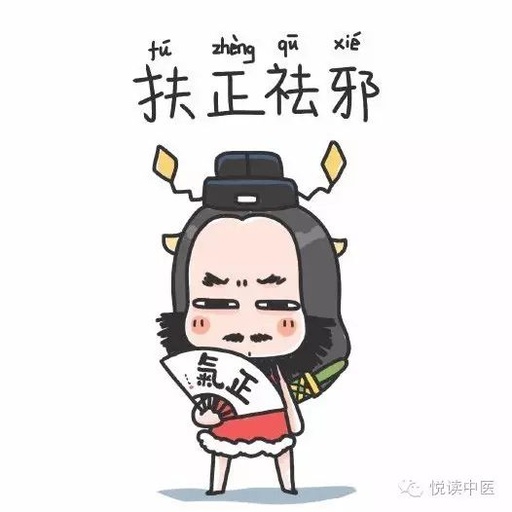Introduction It is often heard from experienced TCM practitioners the phrase “扶正祛邪” (fǔ zhèng qù xié), but what does it specifically mean? Not many may know. In Traditional Chinese Medicine (TCM), the occurrence of disease in the human body is related to the balance of Zheng (正, righteous qi) and Xie (邪, evil qi) within. The outcome of a disease can also be seen as a result of the struggle between these two forces. How can we effectively utilize “扶正祛邪” in clinical practice? Let’s first listen to the clinical experiences of the veteran TCM practitioner Chen Kunshan.

“正” refers to Zheng qi, which generally indicates the normal functions of the body’s organs, meridians, and the ability of qi and blood to resist disease and recover health. “扶正” means to support and nourish the weakened Zheng qi of the body, restoring it to a normal state. Therefore, supporting the Zheng is usually done through tonifying methods, applied in cases of deficiency. “邪” refers to Xie qi, which encompasses all pathogenic factors such as the six excesses (liù yín), epidemics (yì lì), toxins (gǔ dú), blood stasis (yū xuè), phlegm (tán yǐn), etc. “祛邪” means to expel all pathogenic factors that cause disease in the body. Thus, expelling Xie is often done through purging methods, applied in cases of excess.
According to TCM pathophysiology, there exists a mutual struggle between Zheng and Xie forces during the occurrence and development of diseases. The recovery or deterioration of a disease depends on the comparative strength of these two forces. When Zheng qi is strong and Xie qi is weak, the presence of Xie qi may not lead to disease, and if disease occurs, it is often mild and can recover quickly. Conversely, when Zheng qi is deficient and Xie qi is strong, the body is bound to become ill, potentially leading to severe illness and rapid deterioration. This is akin to what is stated in the “Lingshu (灵枢) – On the Origin of Diseases”: “Wind and rain, cold and heat, cannot harm the body if it is not deficient; evil cannot harm a person alone. If one suddenly encounters a storm and does not fall ill, it is because there is no deficiency, thus evil cannot harm alone. This must be due to the deficiency of both the body and the evil wind, which together affect the body.” The “Suwen (素问) – On Needling Methods” also states: “When the five epidemics arrive, they all infect each other, regardless of size, and the symptoms are similar.” This illustrates that TCM considers Xie qi to be a significant factor in the disease process of epidemics. Since supporting Zheng and expelling Xie can alter the balance of forces during the disease process, leading to recovery, it is an essential principle in TCM treatment.
How is supporting Zheng and expelling Xie specifically applied in clinical practice? It must be determined based on the specific situation. Generally speaking, if there is Zheng deficiency, one should support Zheng; if there is excess Xie, one should expel Xie. However, in clinical practice, contradictions are often complex, and conditions can vary greatly. While there are patients with pure Zheng deficiency or pure Xie excess, they are relatively rare; most patients exhibit both Zheng deficiency and Xie excess. In such cases, the physician should employ both expelling Xie and supporting Zheng methods simultaneously. Furthermore, it is essential to analyze the primary contradiction in the patient’s condition at that time. If Zheng deficiency is predominant, the focus should be on supporting Zheng, with expelling Xie as a supplementary approach; if Xie excess is predominant, then expelling Xie should be the main focus, with supporting Zheng as a supplement. In summary, it is crucial to achieve “扶正不留邪,祛邪不伤正” (fǔ zhèng bù liú xié, qù xié bù shāng zhèng) – support Zheng without leaving Xie, expel Xie without harming Zheng.
TCM also believes that supporting Zheng can expel Xie; when Xie is removed, Zheng is at peace. That is, using methods to support and enhance Zheng qi can expel Xie (pathogenic factors); conversely, methods to expel Xie can restore the already deficient Zheng qi. However, if Zheng deficiency is predominant, the focus should be on tonifying deficiency, supplemented by expelling Xie; if Xie excess is predominant, the focus should be on expelling Xie, supplemented by tonifying deficiency. Ultimately, both approaches aim to cure diseases and restore health.
How to support Zheng? There is much knowledge involved, and it must be analyzed specifically. For Zheng deficiency, there can be Yin deficiency, Yang deficiency, Qi deficiency, Blood deficiency, or fluid deficiency. Supporting Zheng typically involves nourishing Yin, tonifying Yang, benefiting Qi, nourishing Blood, generating fluids, and increasing liquid production. This must be combined with the organs and meridians, requiring in-depth differentiation. For example, in cases of heart deficiency, there may be heart Qi deficiency, heart Yang deficiency, heart Blood deficiency, or heart Yin deficiency. Other organ and meridian deficiencies should be similarly analyzed in detail. Additionally, within heart deficiency, there may be simple heart Qi deficiency or both heart Qi and Blood deficiency. Among the five organ deficiencies, there can be one organ deficient or multiple organs deficient simultaneously, such as heart and spleen deficiency, or lung, spleen, and kidney deficiency. All these variations must be carefully and thoroughly differentiated to ensure that the supporting Zheng treatment plan is targeted and precise. For instance, for heart Qi deficiency, one should tonify heart Qi; for both heart Qi and Blood deficiency, one should tonify both Qi and Blood; for heart and spleen deficiency, one should simultaneously tonify both heart and spleen; if Qi deficiency leads to Blood deficiency, one should primarily tonify Qi and supplement Blood; if kidney Yang deficiency fails to warm spleen Yang, leading to simultaneous kidney and spleen Yang deficiency, one should primarily warm and tonify kidney Yang, supplemented by warming and promoting spleen Yang. In summary, before supporting Zheng, it is essential to clarify what is deficient and where the deficiency lies. Is it one deficiency in one place or multiple deficiencies in multiple places? Which is more critical or fundamental? Only then can the final supporting Zheng plan be appropriately formulated.
How to expel Xie? There are also many considerations, and careful differentiation is necessary. First, it is essential to identify which Xie qi is causing the disease. Is it a single type of Xie qi or multiple types attacking simultaneously? If multiple types are present, which is the primary one? What is the strength of the Xie? Where is it located? Only by clarifying these points can an effective expelling Xie treatment plan be formulated. Common methods for expelling Xie include dispersing, purging, draining dampness, promoting urination, expelling phlegm, resolving stasis, and guiding out. For example, if wind-cold external evil invades the Taiyang meridian, one should use warm dispersing herbs to expel the wind-cold from the Taiyang meridian. If warm-heat evil invades the Wei level, one should use cool dispersing herbs to expel the warm-heat pathogenic evil from the Wei level. If wind, cold, and dampness combine to invade the joints causing Bi syndrome, one must clarify which of the three is predominant. If wind is the primary evil causing Bi syndrome, one should use herbs that expel wind and open the meridians to eliminate the wind evil from the joints; if wind-cold is predominant, one should use herbs that expel wind, disperse cold, and warm the meridians to eliminate both wind and cold evils from the joints.
Supporting Zheng and expelling Xie is a principle of TCM treatment, reflecting the methodology of TCM therapeutics, belonging to the realm of methodology. It employs ancient dialectical methods and a simple materialist worldview and methodology to understand and treat diseases. It emphasizes the role of the body’s internal factors in the disease process while also recognizing the pathogenic role of evils. It posits that supporting Zheng can expel Xie, and expelling Xie can stabilize Zheng, organically combining the two, which illustrates that supporting Zheng and expelling Xie is a significant characteristic of TCM therapeutic methodology.
New Media Editor: Wang Dan

Warm Reminder: Want to obtain “Chen Kunshan’s Academic Thoughts and Clinical Experiences“? Click the end of the article to read the original text and get it directly!
Copyright Statement: This article is excerpted from “Chen Kunshan’s Academic Thoughts and Clinical Experiences” (published by China Traditional Chinese Medicine Press, edited by Dai Qi), and the final interpretation rights belong to the original author. Recommended and published by Yue Du Zhong Yi (WeChat ID: ydzhongyi), cover image sourced from the internet. Unauthorized reproduction is prohibited!



